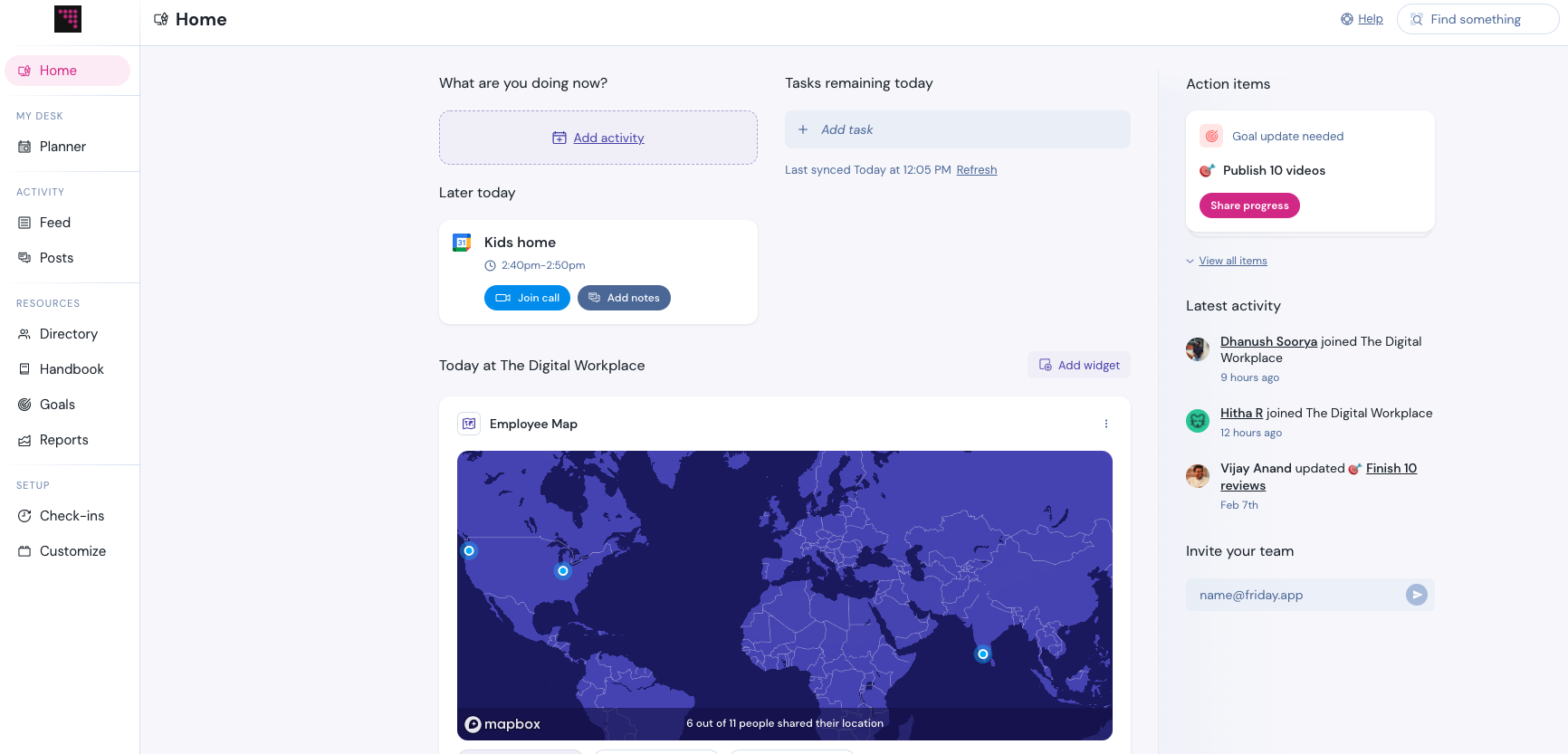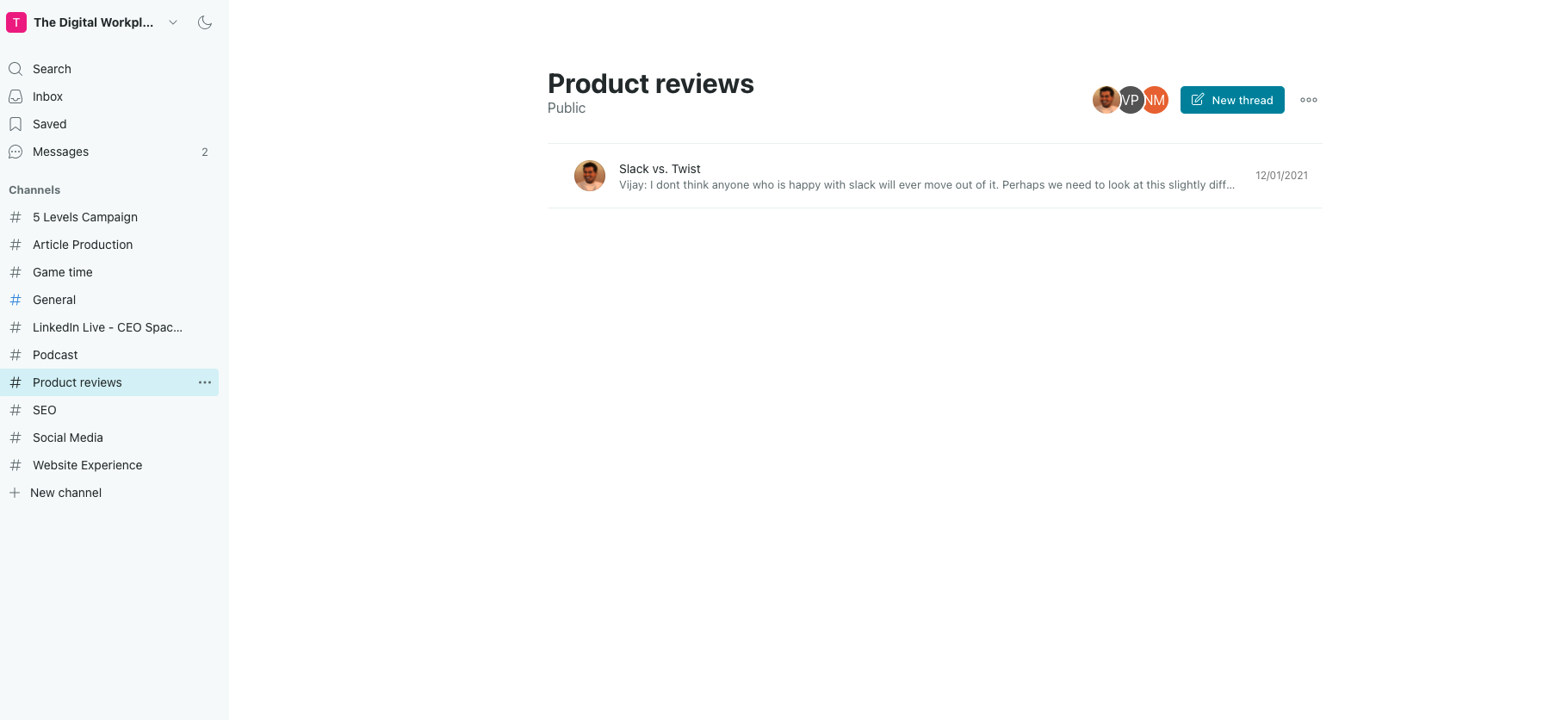We’ve been in a state of emergency for nearly two years. Everything we thought we knew about work has been tested and pushed to the limits.
We’ve worked from home, worked remotely, come back to the office, left the office, made hybrid plans, scrapped those plans, and started all over.
While we don’t have anything near global stability, it’s time for business leaders to move out of crisis mode and start to make longer term plans. This is not just a time to update your policies and find some hacks. This is a time to reshape the future. There couldn’t be a better time to ask how we can make work better in 2022.
How can we make work better in 2022?
A lot of leaders want to build on what we learned from the working-from-home experiment. I recently had the opportunity to chat up a few leaders during a show we hosted. Matthew Paxton, CEO of Hypernia, said, “We realized how efficient our teams can be if they aren’t pressured with the everyday office culture.”
Addressing burnout and wellbeing was a key issue for many leaders. Rachel Service, CEO at Happiness Concierge introduced new permanent benefits like adding two additional days of leave per quarter for rest and resetting.
Suresh Sambandam, CEO of Kissflow, takes a broader perspective. He says we need to complete the paradigm shift from the Industrial Age to the Digital Age. “It’s about moving from command-and-control to self management; from extracting work to purpose; from discipline to autonomy.”
What tools will get you there?
Selecting the right digital tools is an important part of the transition to better work. There are new tools emerging every day, but leaders need to pick the ones that best suit their culture and purpose.
Reagan Jobe, Co-Founder and Chief Solver at EasyCheck uses Microsoft Teams for team communication, Sketch for design, and Asana for task management. They also give all employees a subscription to Spotify or Apple Music which has done a lot for productivity.
Matthew Paxton and the Hypernia team have recently shifted to Notion for better collaboration. He says it makes collaboration feel less like work and more like sharing notes with each other.
Organizations that have leaders who are not as excited about new technology might be hesitant to throw yet another productivity tool in the mix. During one of our debate panels, Suresh Sambandam said that the right digital tools are very important, but they aren’t a metric of success on their own.
“Leaders don’t struggle in the digital age because they can’t use Slack,” he said. “They struggle because they don’t understand the new paradigm required that employees are demanding.” Matching the tool with the purpose is essential.
In fact, one of the new en vogue tools mentioned by leaders is the cell phone. A quick, direct voice call is the replacement for turning around in your chair, but can also be declined if someone is busy. A synchronous call of 5 minutes can replace a day-long back and forth chat thread.
How do you keep employees engaged?
Employee engagement is on the mind of every leader. With a tight talent market, finding and keeping the right people is essential to business operations.
Larry Gadea, CEO of Envoy, is focused on the employee experience. “The two most important questions we ask ourselves and our people: ‘What kind of workplace do you want to return to?’ and ‘What can we do better?’” Larry says that by automating the mundane tasks that waste time, they demonstrate that they want people to focus on their core job, not on all the work surrounding the job.
Reagan Jobe sees meetings and time management as the first place to start. “We need to ensure we focus on our product and not ‘meeting’ about it all the time,” she said. Respecting people’s time is a great way to show that you care about what they do.
Rebuild work for the digital age
During the debates for Digital Workplace Day, David Heinemeier Hansson, Cofounder of Basecamp and Hey said, “A crisis is a process you should welcome to some extent. It’s difficult in the moment, but on the other side is clarification.”
The moment of the global pandemic is starting to pass. It has been difficult, but we’ve learned a lot through it. Now is the time for leaders to stop and find that clarification. What is essential for work? How can you create the best environment for your team? What tools will help you do that?
We have an opportunity to rebuild work for the better. Let’s take the chance while we have it.
Photo by Jametlene Reskp on Unsplash
We’ve been in a state of emergency for nearly two years. Everything we thought we knew about work has been tested and pushed to the limits.
We’ve worked from home, worked remotely, come back to the office, left the office, made hybrid plans, scrapped those plans, and started all over.
While we don’t have anything near global stability, it’s time for business leaders to move out of crisis mode and start to make longer term plans. This is not just a time to update your policies and find some hacks. This is a time to reshape the future. There couldn’t be a better time to ask how we can make work better in 2022.
How can we make work better in 2022?
A lot of leaders want to build on what we learned from the working-from-home experiment. I recently had the opportunity to chat up a few leaders during a show we hosted. Matthew Paxton, CEO of Hypernia, said, “We realized how efficient our teams can be if they aren’t pressured with the everyday office culture.”
Addressing burnout and wellbeing was a key issue for many leaders. Rachel Service, CEO at Happiness Concierge introduced new permanent benefits like adding two additional days of leave per quarter for rest and resetting.
Suresh Sambandam, CEO of Kissflow, takes a broader perspective. He says we need to complete the paradigm shift from the Industrial Age to the Digital Age. “It’s about moving from command-and-control to self management; from extracting work to purpose; from discipline to autonomy.”
What tools will get you there?
Selecting the right digital tools is an important part of the transition to better work. There are new tools emerging every day, but leaders need to pick the ones that best suit their culture and purpose.
Reagan Jobe, Co-Founder and Chief Solver at EasyCheck uses Microsoft Teams for team communication, Sketch for design, and Asana for task management. They also give all employees a subscription to Spotify or Apple Music which has done a lot for productivity.
Matthew Paxton and the Hypernia team have recently shifted to Notion for better collaboration. He says it makes collaboration feel less like work and more like sharing notes with each other.
Organizations that have leaders who are not as excited about new technology might be hesitant to throw yet another productivity tool in the mix. During one of our debate panels, Suresh Sambandam said that the right digital tools are very important, but they aren’t a metric of success on their own.
“Leaders don’t struggle in the digital age because they can’t use Slack,” he said. “They struggle because they don’t understand the new paradigm required that employees are demanding.” Matching the tool with the purpose is essential.
In fact, one of the new en vogue tools mentioned by leaders is the cell phone. A quick, direct voice call is the replacement for turning around in your chair, but can also be declined if someone is busy. A synchronous call of 5 minutes can replace a day-long back and forth chat thread.
How do you keep employees engaged?
Employee engagement is on the mind of every leader. With a tight talent market, finding and keeping the right people is essential to business operations.
Larry Gadea, CEO of Envoy, is focused on the employee experience. “The two most important questions we ask ourselves and our people: ‘What kind of workplace do you want to return to?’ and ‘What can we do better?’” Larry says that by automating the mundane tasks that waste time, they demonstrate that they want people to focus on their core job, not on all the work surrounding the job.
Reagan Jobe sees meetings and time management as the first place to start. “We need to ensure we focus on our product and not ‘meeting’ about it all the time,” she said. Respecting people’s time is a great way to show that you care about what they do.
Rebuild work for the digital age
During the debates for Digital Workplace Day, David Heinemeier Hansson, Cofounder of Basecamp and Hey said, “A crisis is a process you should welcome to some extent. It’s difficult in the moment, but on the other side is clarification.”
The moment of the global pandemic is starting to pass. It has been difficult, but we’ve learned a lot through it. Now is the time for leaders to stop and find that clarification. What is essential for work? How can you create the best environment for your team? What tools will help you do that?
We have an opportunity to rebuild work for the better. Let’s take the chance while we have it.
Photo by Jametlene Reskp on Unsplash
)
)
)







